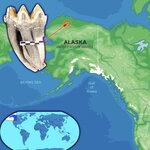Genetics & Molecular Biology

While studying the mechanisms of development in shark embryos, University of Florida scientists identified genetic activity that is required for digit development in limbed animals.
Previous work suggested that the transition from fins to limbs involved the addition of a late phase of gene activity during embryonic development, something thought to be absent during the development of fish fins.
The finding shows what was thought to be a relatively recent evolutionary innovation existed eons earlier than previously believed, shedding light on how life on Earth developed and potentially…

According to the Centers for Disease Control, 7% of the U.S. population has diabetes, and 90-95% of those cases are classified as type 2 diabetes. Type 2 diabetes is caused by external factors -namely diet and exercise - but is also influenced by several genes.
While most of the genes known to be involved in diabetes susceptibility are located in the nuclear genome, a recent study by Cold Spring Harbor Laboratory estimated that more than 20% of type 2 diabetes cases may involve mutations in the mitochondrial genome.
Mitochondria are energy-producing structures harboring DNA that are…

In a study published in the August 17 issue of the Journal of Biological Chemistry, Amanda J. Law, Associate Professor at the University of Oxford and colleagues at NIH describe for the first time a genetic variation that causes a gene to be overexpressed in the human brain. These results may provide a new way to design better drugs to treat schizophrenia.
“Although the exact causes of schizophrenia are yet to be determined, scientists agree that the disease is in part due to genetic variations,” Law says. “These variations are not simple to understand because they don’t directly disturb the…

University of Cincinnati (UC) neurovascular researchers have identified a gene that—when suppressed or completely absent—may predispose a person to brain aneurysms.
Todd Abruzzo, MD, and his colleagues demonstrated that “knocking out” a gene known as endothelial nitric oxide synthase (NOS-3) in an animal model led to intracranial aneurysm formation in 33 percent of study subjects.
Scientists say this suggests that the gene may play an important role in the development of intracranial aneurysms.
An aneurysm occurs when a blood vessel weakens and stretches, forming a bulge in the vessel wall…

As we develop, the company we keep may be increasingly influenced by our genes, according to a new study led by Virginia Commonwealth University researchers.
Researchers report that as individuals develop, genes become increasingly important in influencing how they choose their peer groups. The findings offer insight into which individuals may be at risk for future substance use or other externalizing behaviors such as conduct and antisocial personality disorder.
“As we grow and move out of our own home environment, our genetically influenced temperament becomes more and more important in…

Michael Hofreiter from the Max Planck Institute for Evolutionary Anthropology in Germany, and colleagues from Switzerland and the United States, announce the sequencing of the complete mitochondrial genome of the mastodon (Mammut americanum), a recently extinct relative of the living elephants that diverged about 26 million years ago.
The sequence was obtained from a tooth dated to 50,000–130,000 years ago, increasing the specimen age for which such palaeogenomic analyses have been done by almost a complete glacial cycle. The mastodon becomes only the third extinct taxon for which the…

Scientists thought that most new genes were formed from existing genes, but Cornell researchers have discovered a gene in some fruit flies that appears to be unrelated to other genes in any known genome.
The new gene, called hydra, exists in only a small number of species of Drosophila fruit flies, which suggests it was created about 13 million years ago, when these melanogaster subgroup species diverged from a common ancestor.
And early evidence indicates that the new gene is functional (as opposed to being nonfunctional "junk" DNA) and is likely to express a protein involved in late stages…
Faster growth, darker leaves, a different way of branching - wild varieties of the plant Arabidopsis thaliana are often substantially different from the laboratory strain of this small mustard plant, a favorite of many plant biologists.
Which detailed differences distinguish the genomes of strains from the polar circle or the subtropics, from America, Africa or Asia has been investigated for the first time by research teams from TÃbingen, Germany, and California led by Detlef Weigel from the Max Planck Institute for Developmental Biology. The results were surprising: The extent of the…

The genetic makeup of any species is more like customized open source code than something that is fixed and can be easily documented. The parts of our 'code' that have withstood the test of time and the parts have undergone rapid evolutionary change has been difficult to assess.
Staying with the metapohor, an international team of researchers has developed a simple method to comb whole genomes for all the software fixes and security patches accumulated over time. In a first trial run, the scientists catalogued the genetic variations in 23 strains of the mustard weed Arabidopsis thaliana that…

A specific genetic variation may be tied to an increased risk for severe premenstrual depression, scientists at the University of North Carolina at Chapel Hill and the National Institute of Mental Health have found.
Known medically as premenstrual dysphoric disorder, or PMDD, this psychiatric condition affects roughly 8 percent of women in their childbearing years. It's characterized by bouts of major depression and/or anxiety and severe irritability during the second half of the menstrual cycle. Symptoms subside with the onset of each menstrual period.
While PMDD has been thought to be…